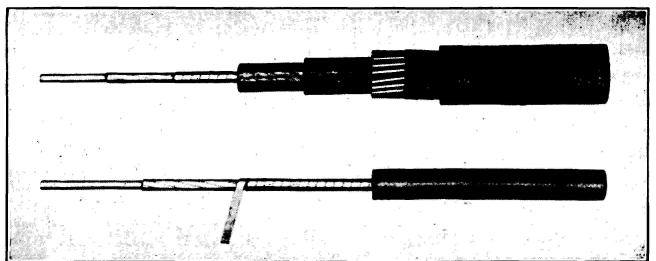| Electrical Communication is a free textbook on the basics of communication technology. See the editorial for more information.... |

|

Home  Cables and Wave Guides Cables and Wave Guides  Submarine Telegraph Cables Submarine Telegraph Cables |
|||






|
|||
Submarine Telegraph CablesThe first successful telegraph cable was laid across the Atlantic in about 1865. In general telegraph cables are coaxial, and the equations and discussions previously given for these cables apply. Actually, however, such cables were operated at such low telegraphic speeds that they were usually designed on a direct-current basis. Transoceanic submarine telegraph cables were first inductively loaded in 1924. Although coil or lumped loading is used for short submarine cables in relatively shallow water, for mechanical reasons it is not well adapted for long transoceanic submarine cables. Krarup or continuous loading is accordingly used for such cables.25 Cables are continuously loaded by wrapping the conductors with either a magnetic tape or wire. This increases the number of magnetic lines of force encircling the wire for a given current value and thus uniformly increases the inductance. The fundamental transmission equations of Chapter 6 for circuits with distributed constants apply. A continuously loaded cable does not exhibit the filter action present in coil-loaded circuits. The first loaded submarine telegraph cables used Permalloy tape, closely wound on the central copper conductor (Fig. 26).
|
|||
Home  Cables and Wave Guides Cables and Wave Guides  Submarine Telegraph Cables Submarine Telegraph Cables |
|||
Last Update: 2011-05-30


